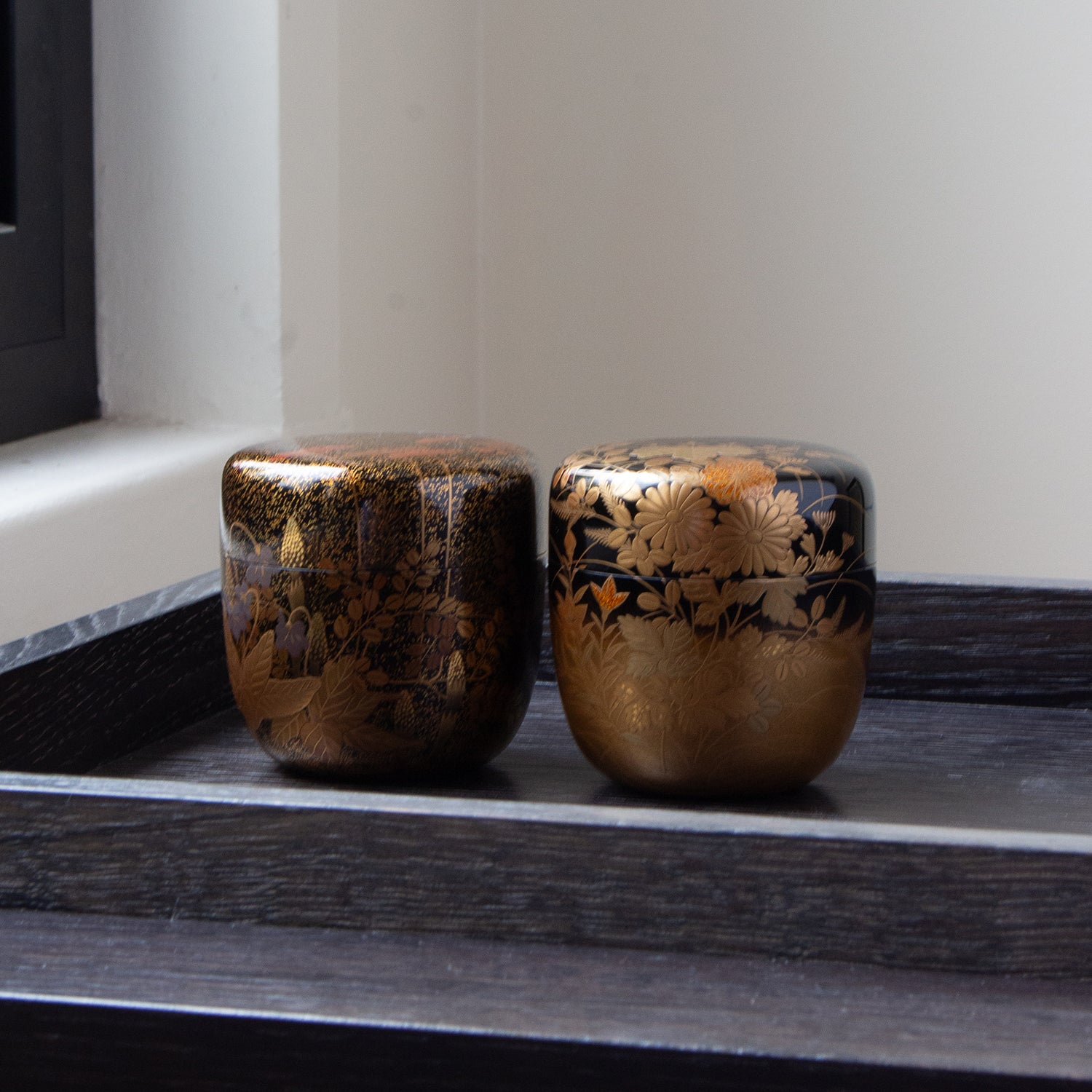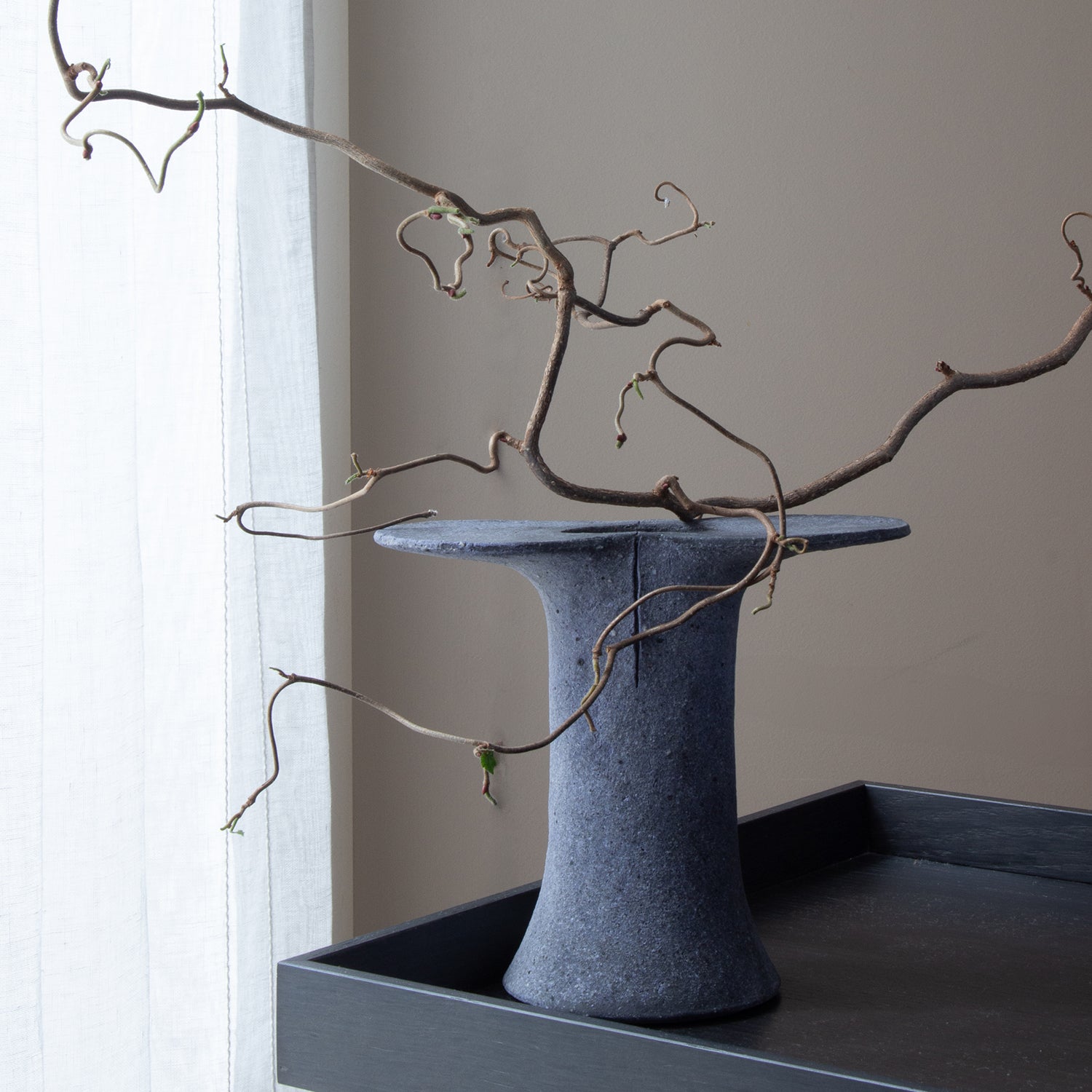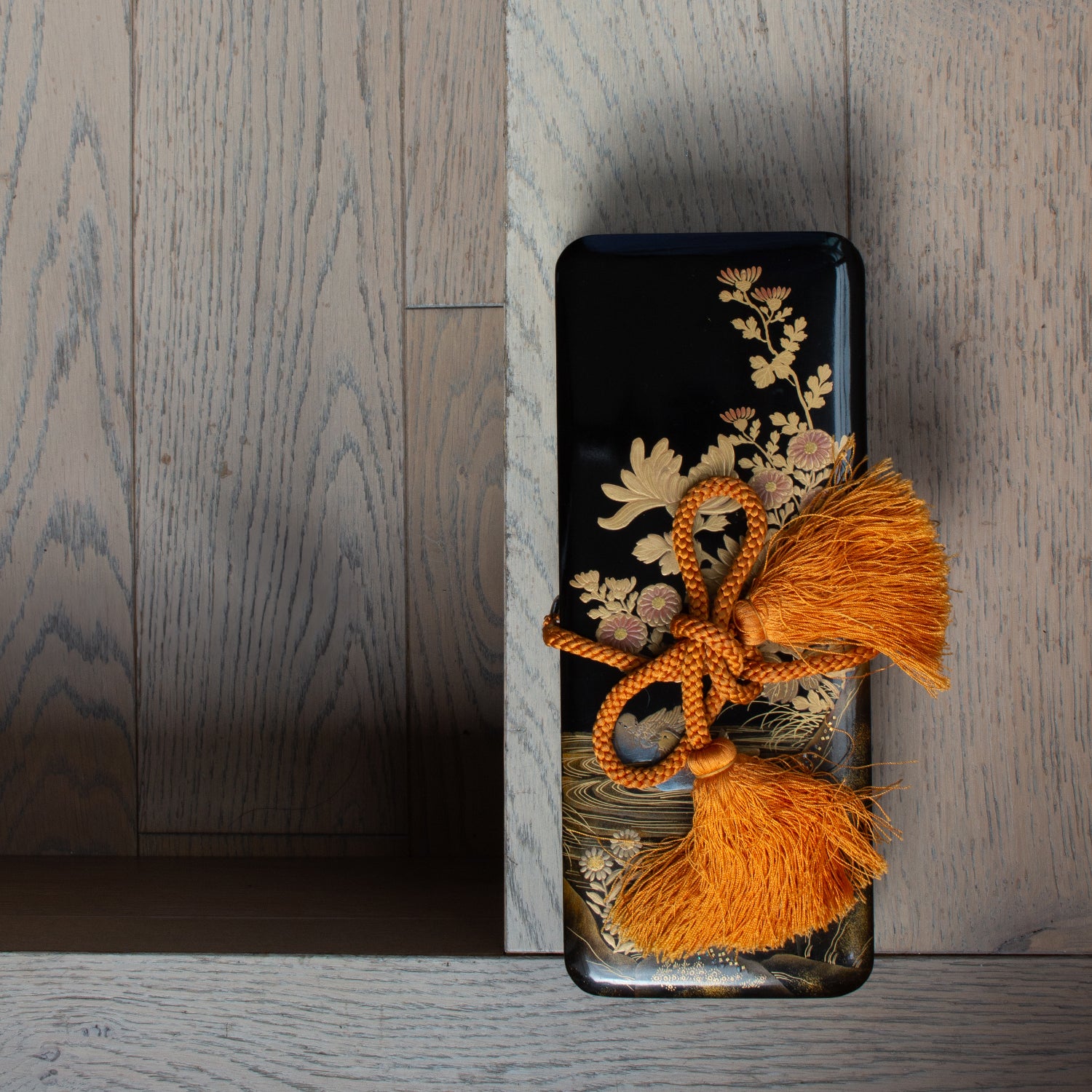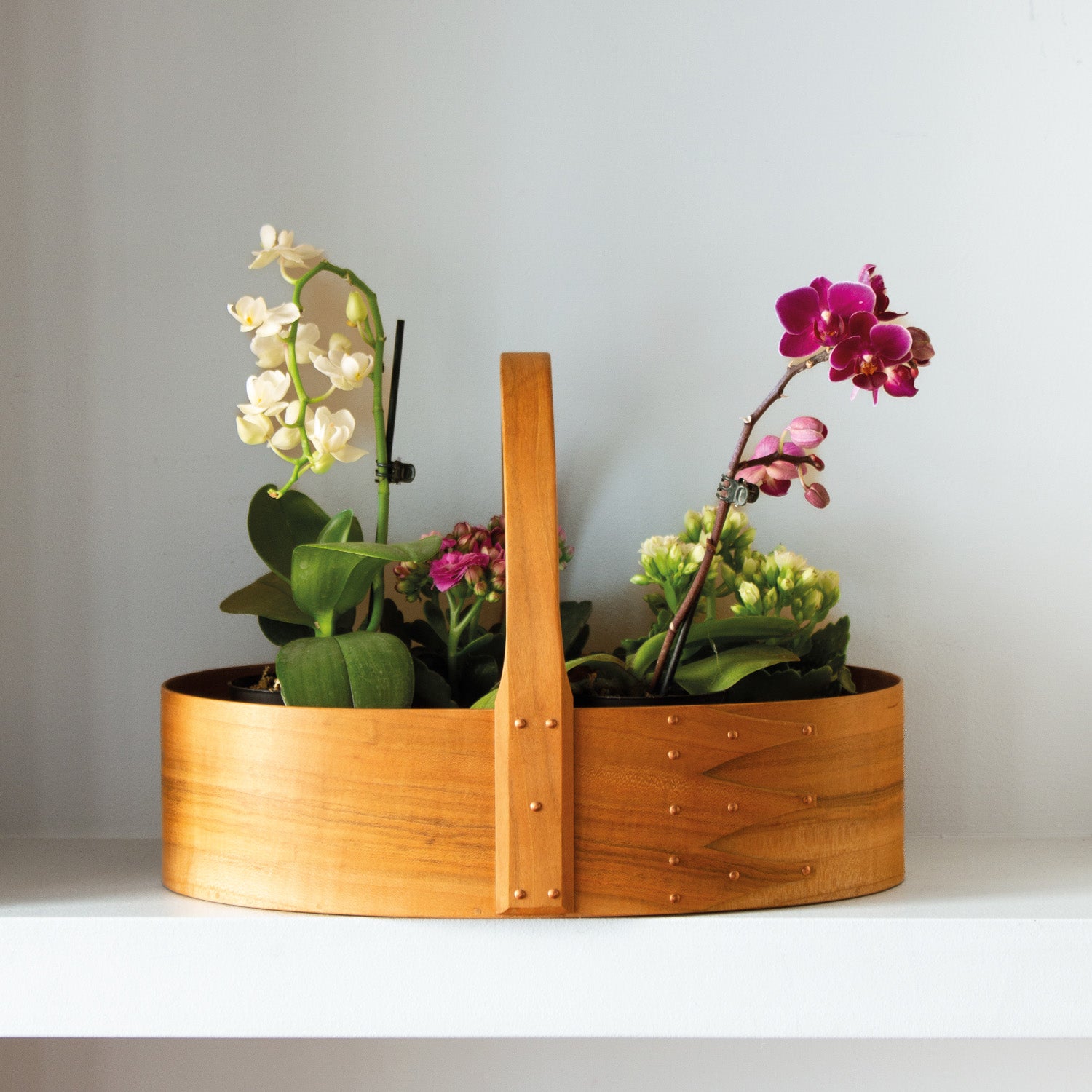
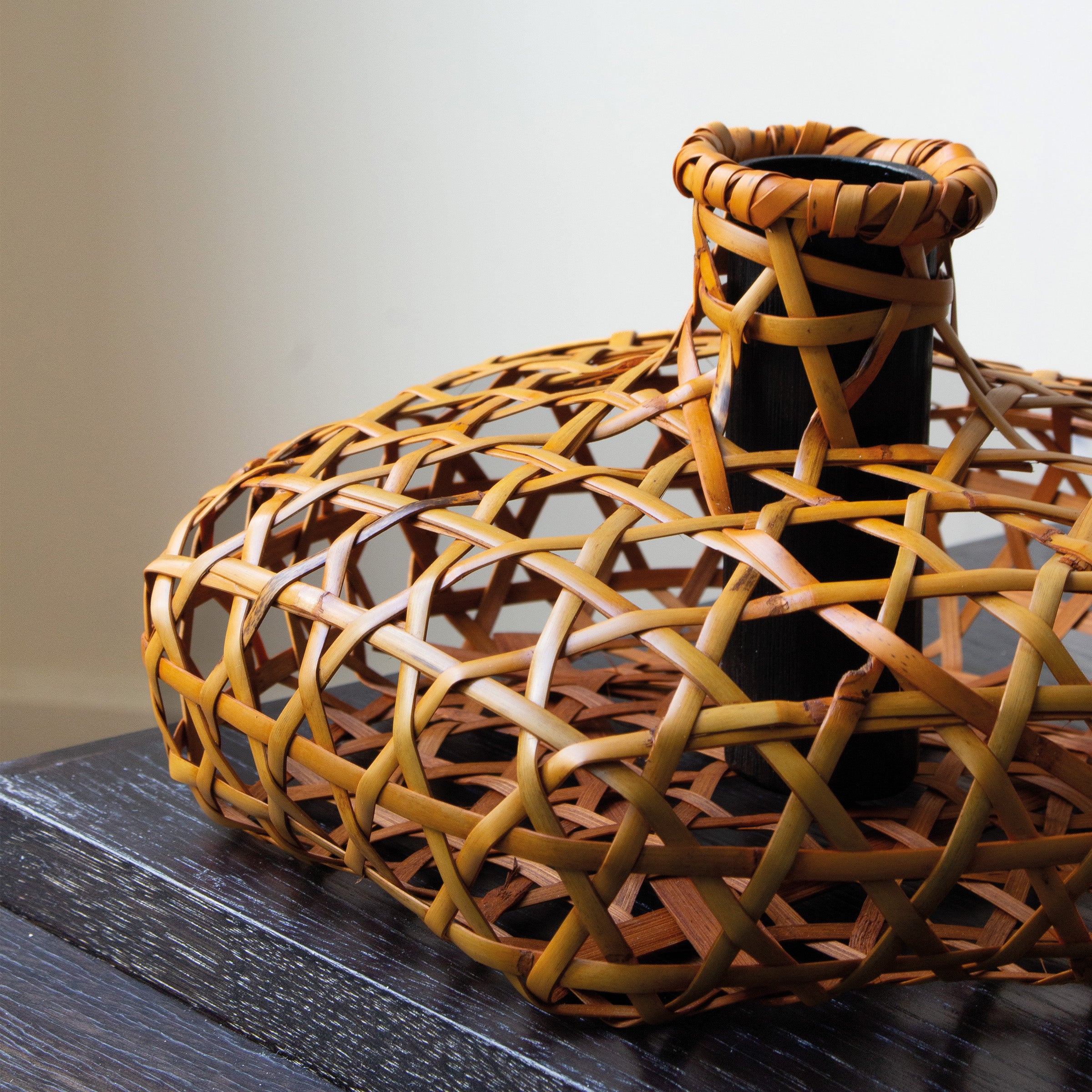
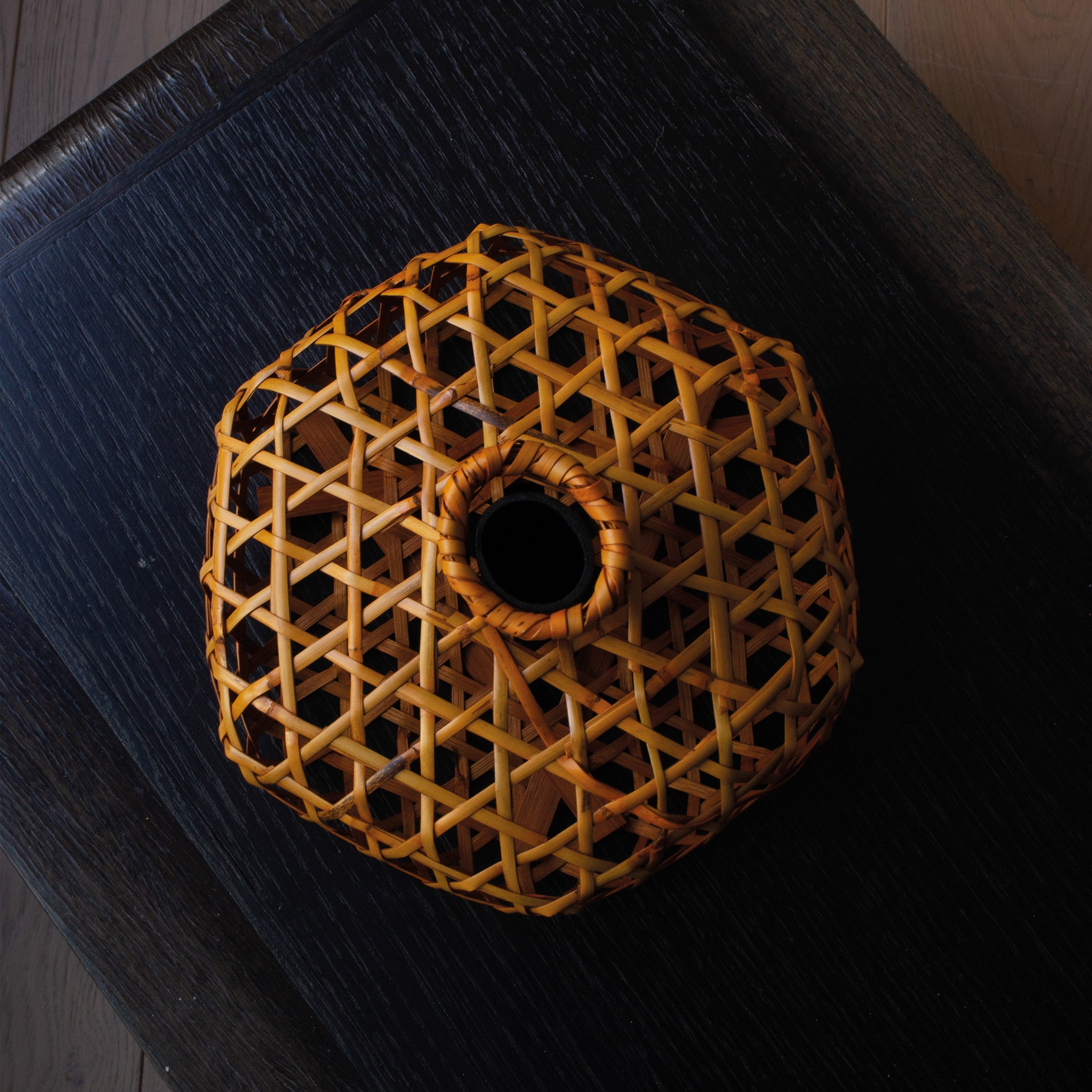
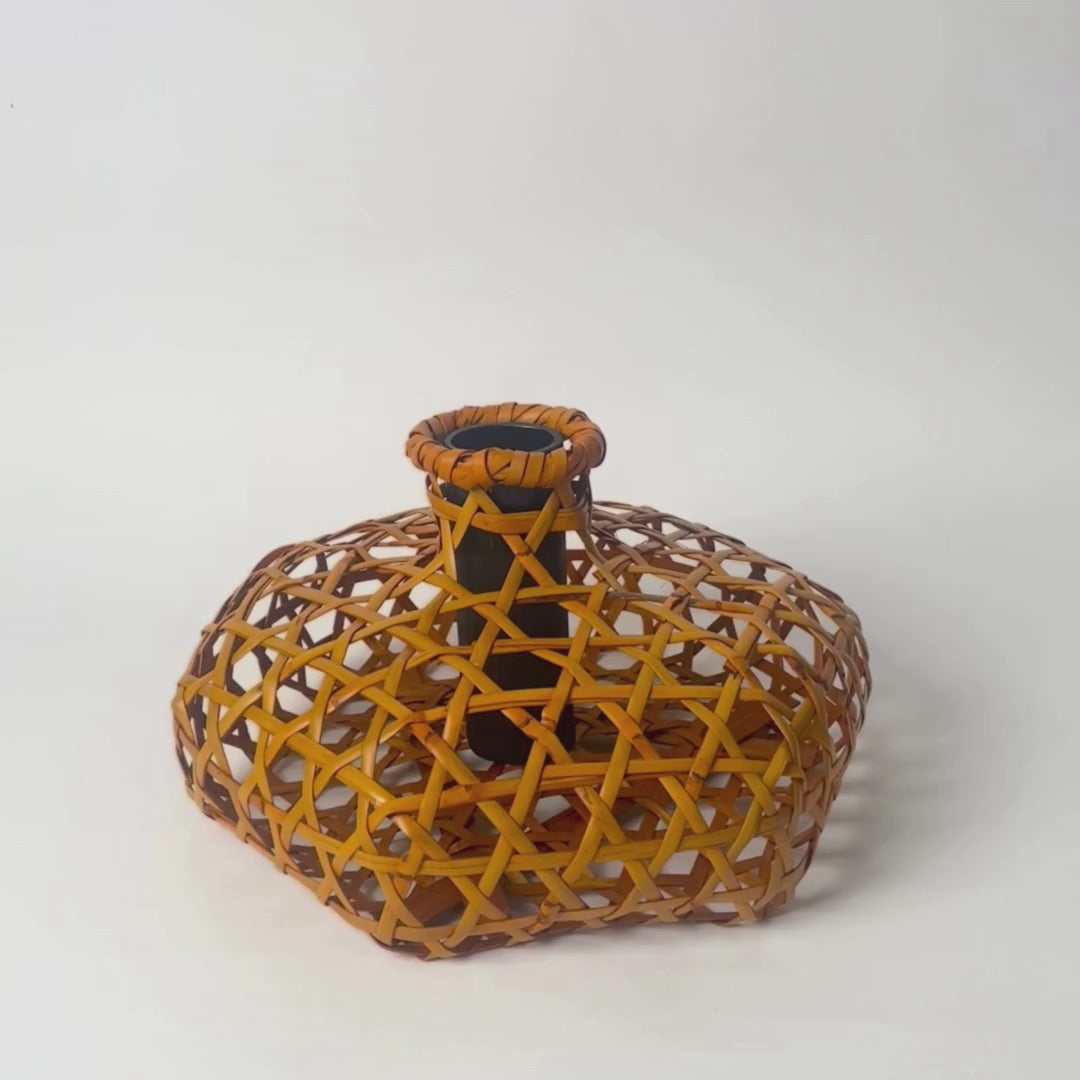
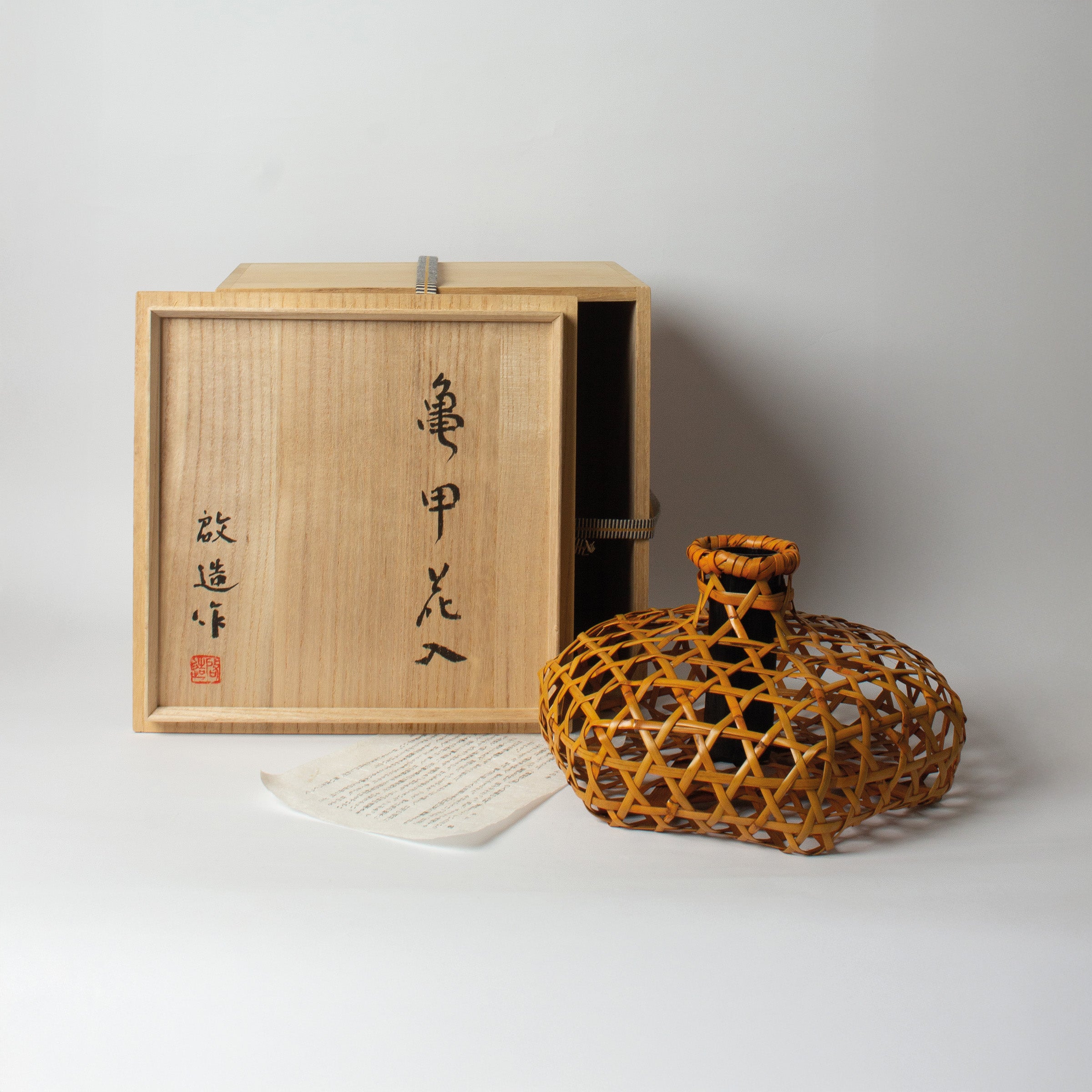

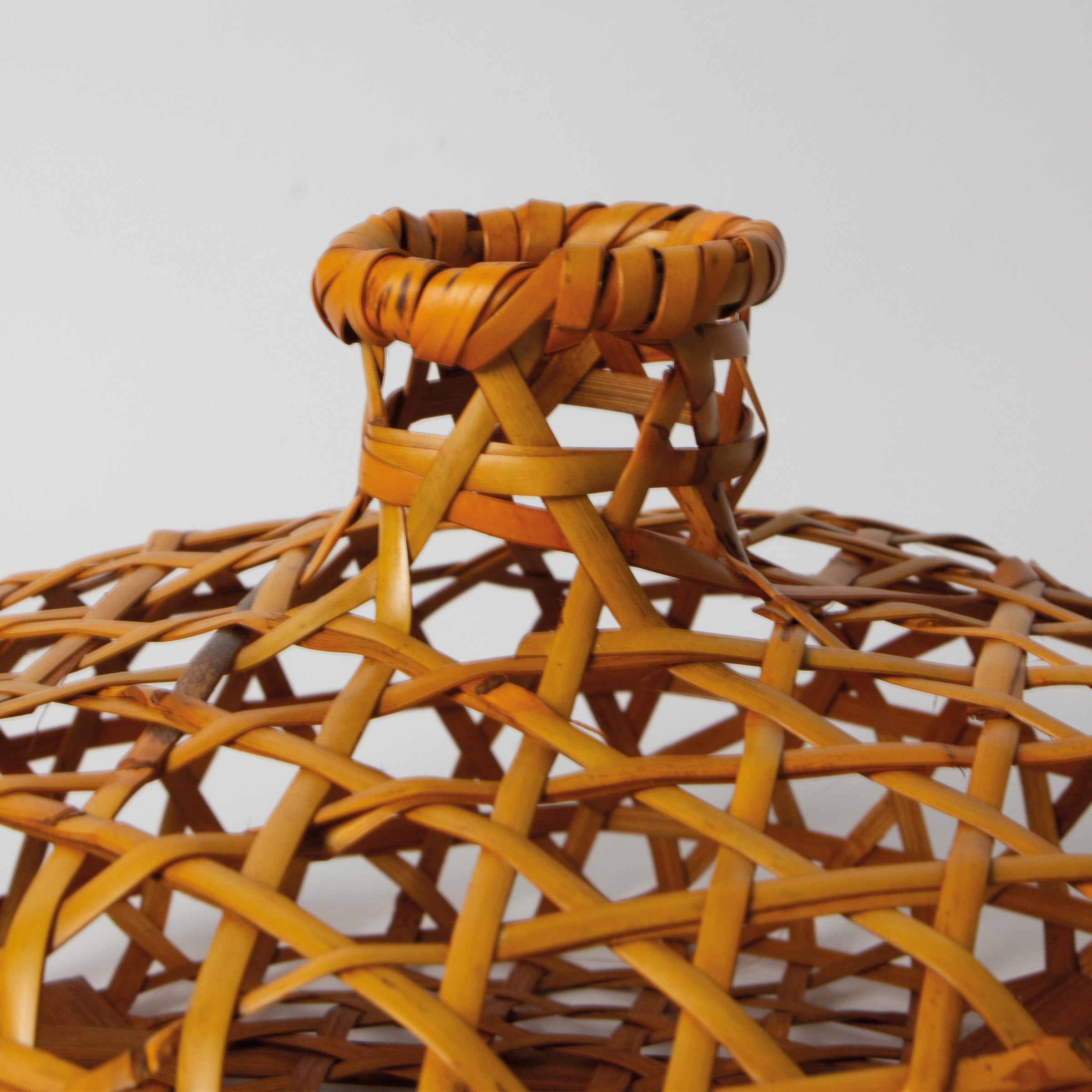
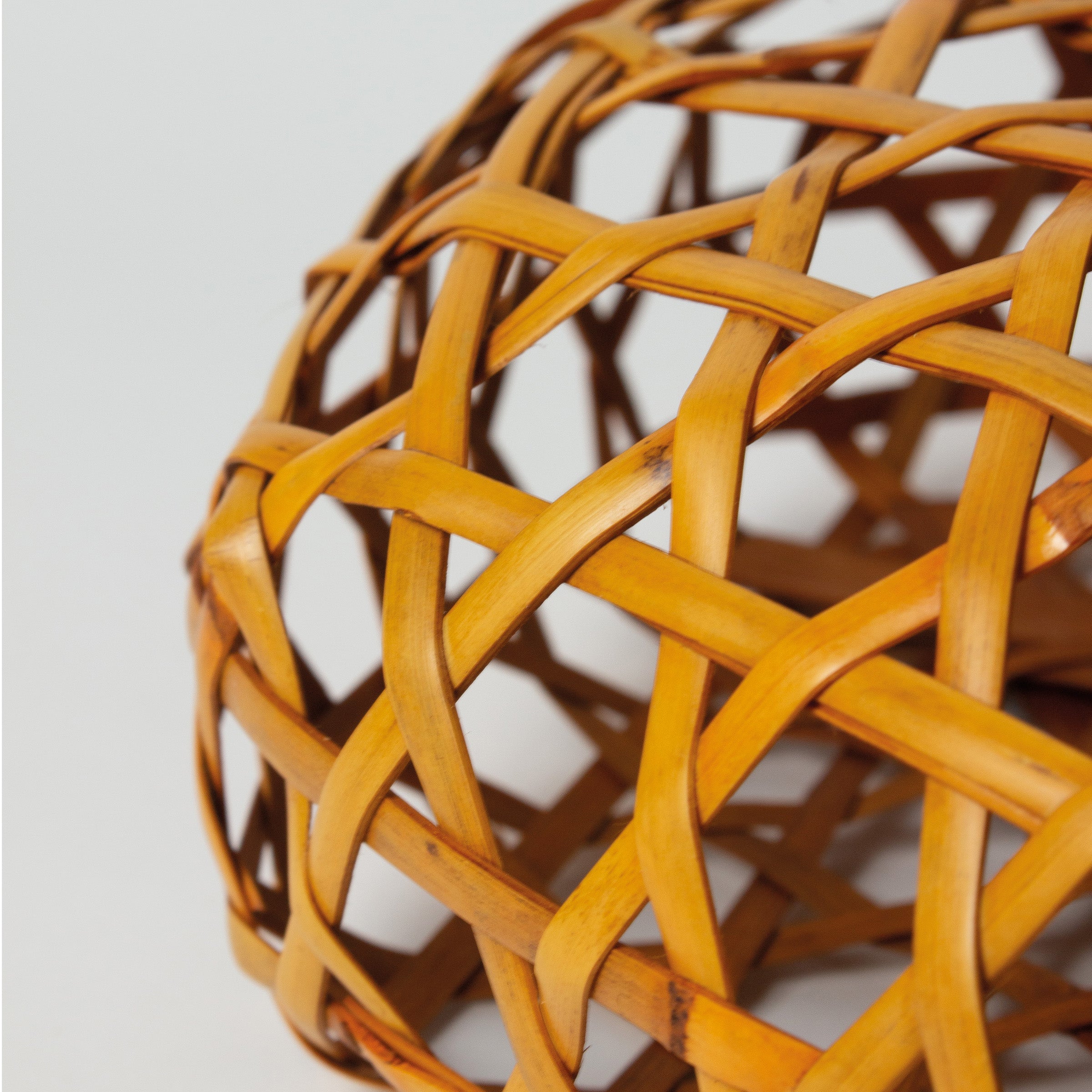
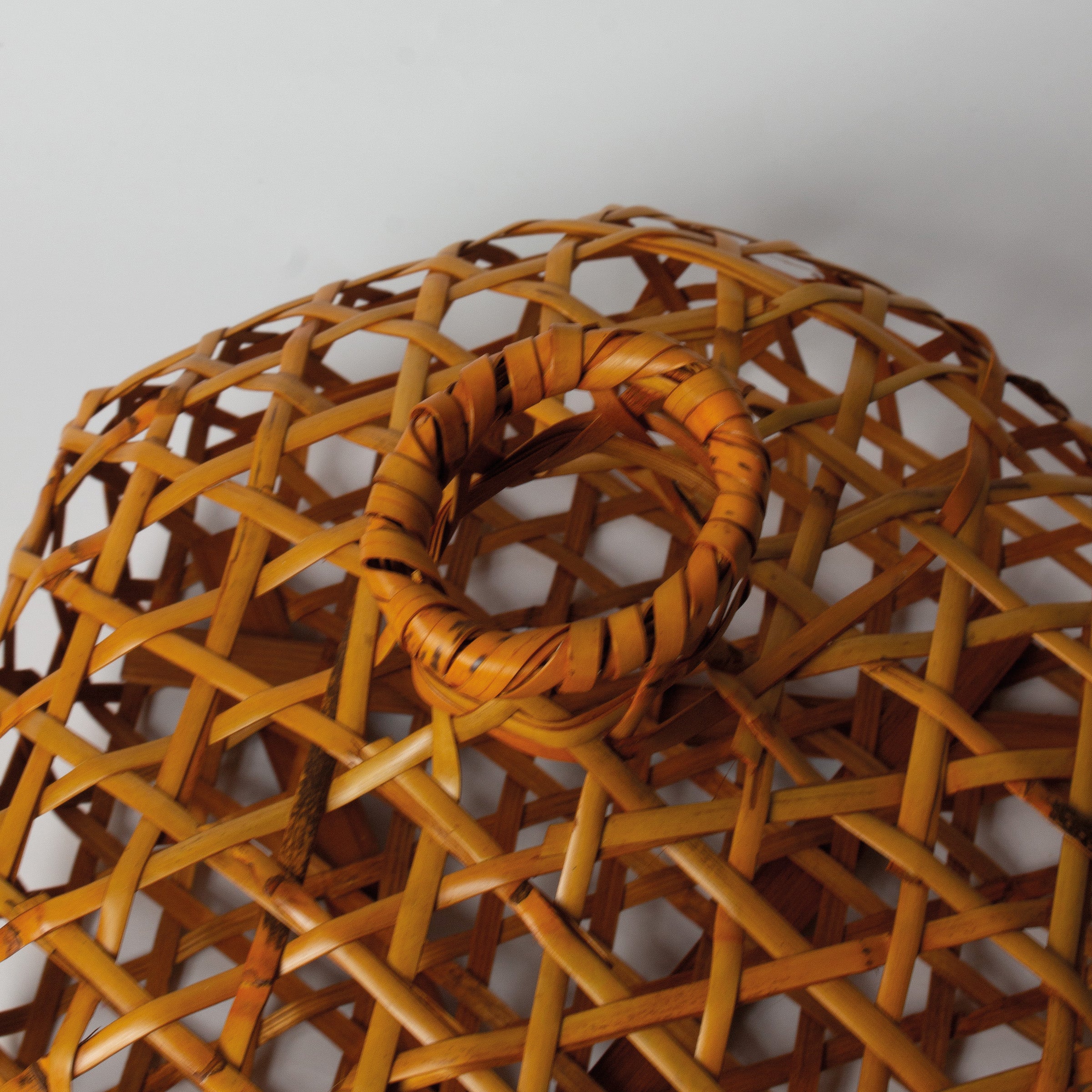
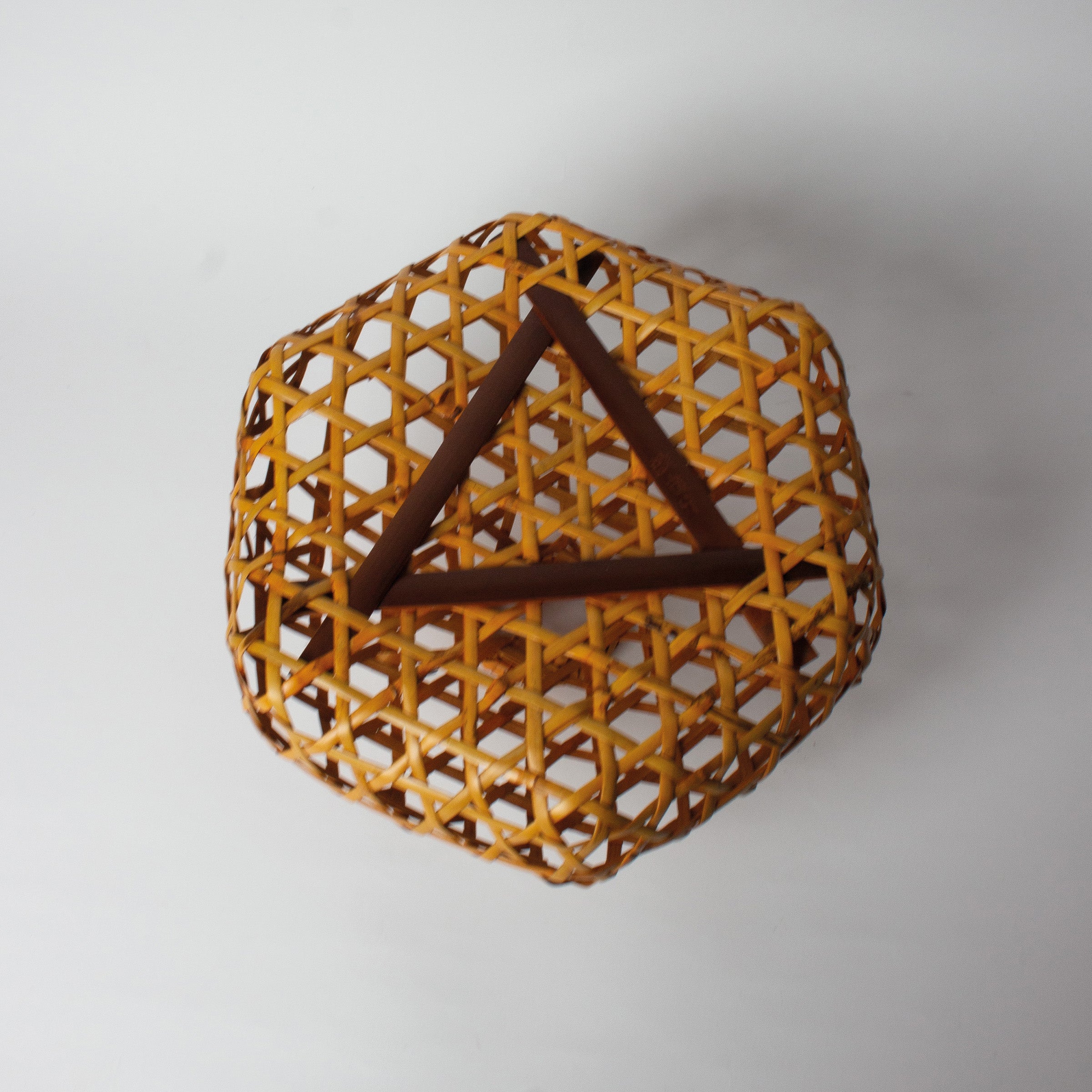
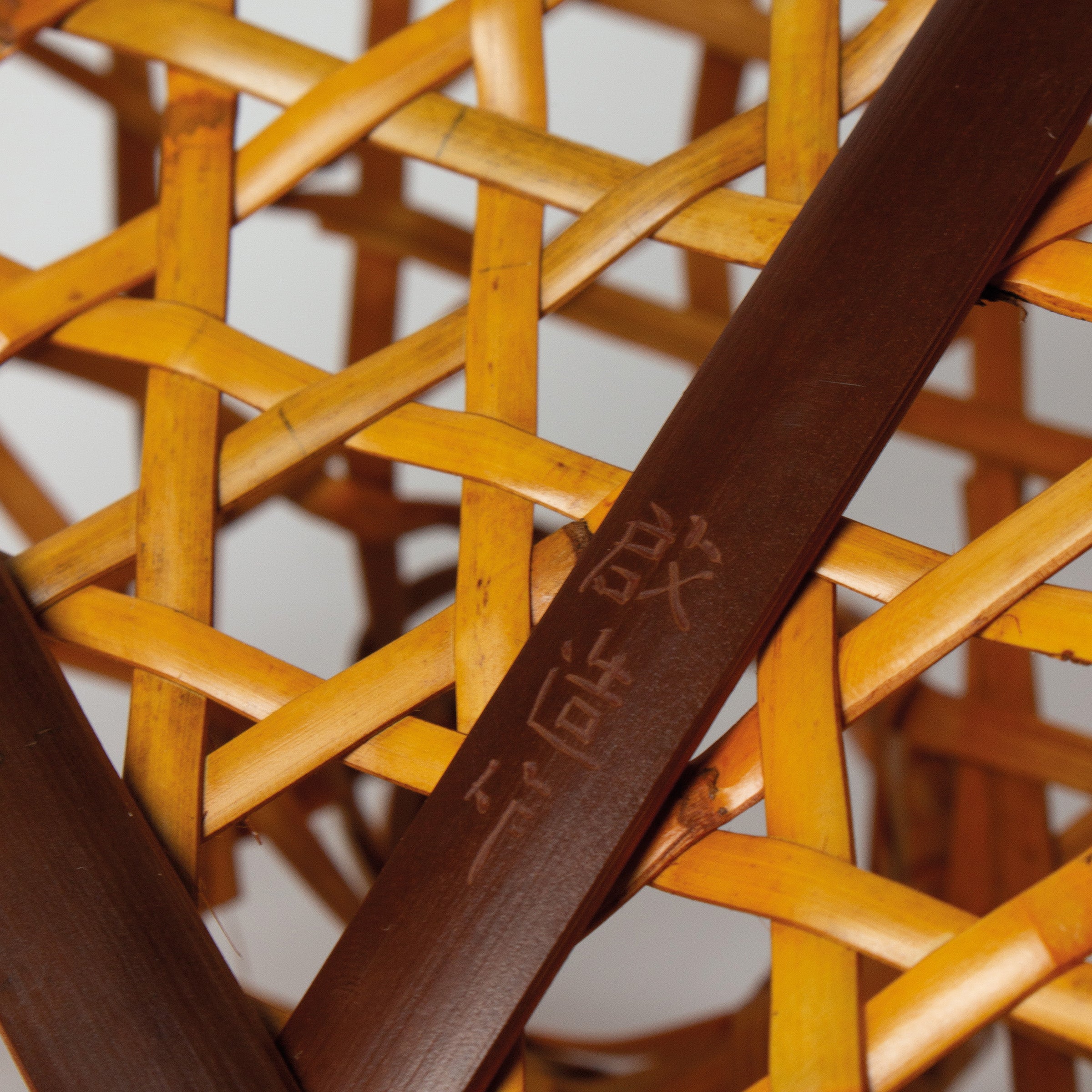
Kikkō woven bamboo vase by Keizō Yagisawa
This woven bamboo vase appeals with the very contemporary elegance of its shape and the rigor of its execution. The kikkō pattern, inspired by the turtle shell, unfolds with remarkable regularity in the braiding. The hexagonal interlacing creates a refined play of lines, accentuated by golden nuances of the bamboo. The vase has an inner container ( otoshi ) in black lacquered bamboo, designed to hold the water for floral arrangements. With its refined style, its very modern and very balanced hexagonal shape, this woven bamboo vase is particularly suitable for minimalist arrangements: a branch, a few carefully chosen stems. This type of vase is very popular in Japan as part of the tea ceremony ( chanoyu ), where the balance between the floral arrangement and its container is essential.
Keizō Yagisawa (1927–2006), originally from Tochigi Prefecture, was a renowned craftsman in the field of Japanese woven bamboo ( takezaiku ). A student of Living National Treasure Katsushirō Sōhō, he established his own workshop in Ōtawara and was appointed as a craftsman to the Imperial Household, making baskets for official presentations. His works are distinguished by the quality of their weaving and the purity of their lines and are highly valued on the art market.
The art of woven bamboo ( takezaiku ) is one of the greatest skills of Japanese craftsmanship. Heir to centuries-old techniques, this refined art requires a deep knowledge of the material—from the selection of bamboo to its cutting, drying, and preparation—as well as perfect mastery of the weaving gestures. Each creation, whether a basket or a woven bamboo vase, requires hours of meticulous work. Now recognized as an art in its own right, Japanese woven bamboo was brought to light in France thanks to the exhibition Fendre l'Air. L'art du bambou au Japon , presented in 2018 at the Musée du Quai Branly – Jacques Chirac. This exhibition revealed the richness and diversity of this tradition, which combines formal rigor, aesthetic sensitivity, and contemporary creativity.
The vase is signed by the craftsman at its base and comes with its original wooden box ( tomobako ), also signed, all of which guarantees the authenticity and value of the work.
A unique handcrafted piece, wonderfully decorative, traditional in its heritage but very contemporary in its style, and which fits perfectly into a modern urban universe.
It dates from the Heisei era (1989-2019), is in very good condition, with minor wear consistent with age and use.
| PLACE OF MANUFACTURE | JAPAN |
| DIMENSIONS |
Width 24.4cm - Depth 23.1cm - Height 13.5cm |
|
WEIGHT |
860gr (vase + box) |
| MATERIALS | Bamboo |
THE ART OF TAKEZAIKU (JAPANESE PLAITED BAMBOO)
To make a woven bamboo object, the master craftsman must first select the best bamboo, a plant found everywhere in Japan with many endemic varieties, but only the finest will produce the most beautiful basketwork, so this first selection is key. The cut bamboo is then heated to remove the oil present in its heart, then left to dry. Then begins the slow and extremely tedious work of cutting the bamboo pieces vertically, entirely manually with the help of various very simple tools, including knives, to obtain increasingly thin strips, the challenge being of course to obtain strips of very specific and identical dimensions. A very physical job! The patterns are then created by braiding and bending the different strips using ancestral techniques. Several months of work are necessary.
KNOW-HOW
The art of bamboo in Japan, born from centuries-old traditions, transforms this natural plant into works of great delicacy. Craftsmen master the art of weaving, a complex technique that consists of intertwining the fibers to create baskets, decorative objects of extreme finesse and even sculptures, many of which are exhibited in museums.
Each region has developed its own style, reflecting the unique relationship between nature and know-how. Passed down from generation to generation, this art combines precision and creativity, while adapting to contemporary aesthetics.
Bamboo, a symbol of flexibility and strength, perfectly embodies the spirit of Japanese craftsmanship, respectful of immutable traditions inspiring new creativity.
DELIVERY
Delivery
Free delivery in metropolitan France for purchases over €150. Orders are generally sent within 2 working days, except in special cases announced in the banner at the top of the site.
Precious items are wrapped in beautiful cloth, beautifully tied in the precious art of Korean pojagi. Some exceptions apply, especially if the items are bulky. Learn more >
Detailed information on deliveries is available via this link >
Your invoice will be sent by email
Payment methods
By card (Stripe operator): Visa, MasterCard, Discover, American Express.
Secure card payment with 3D Secure.
By PayPal, Apple Pay, Google Pay and Shop Pay
Returns and exchanges
14 days to change your mind.
CARE INSTRUCTIONS
Handle with care. Rub gently with a soft cloth. Do not place near a heat source.
Choose options











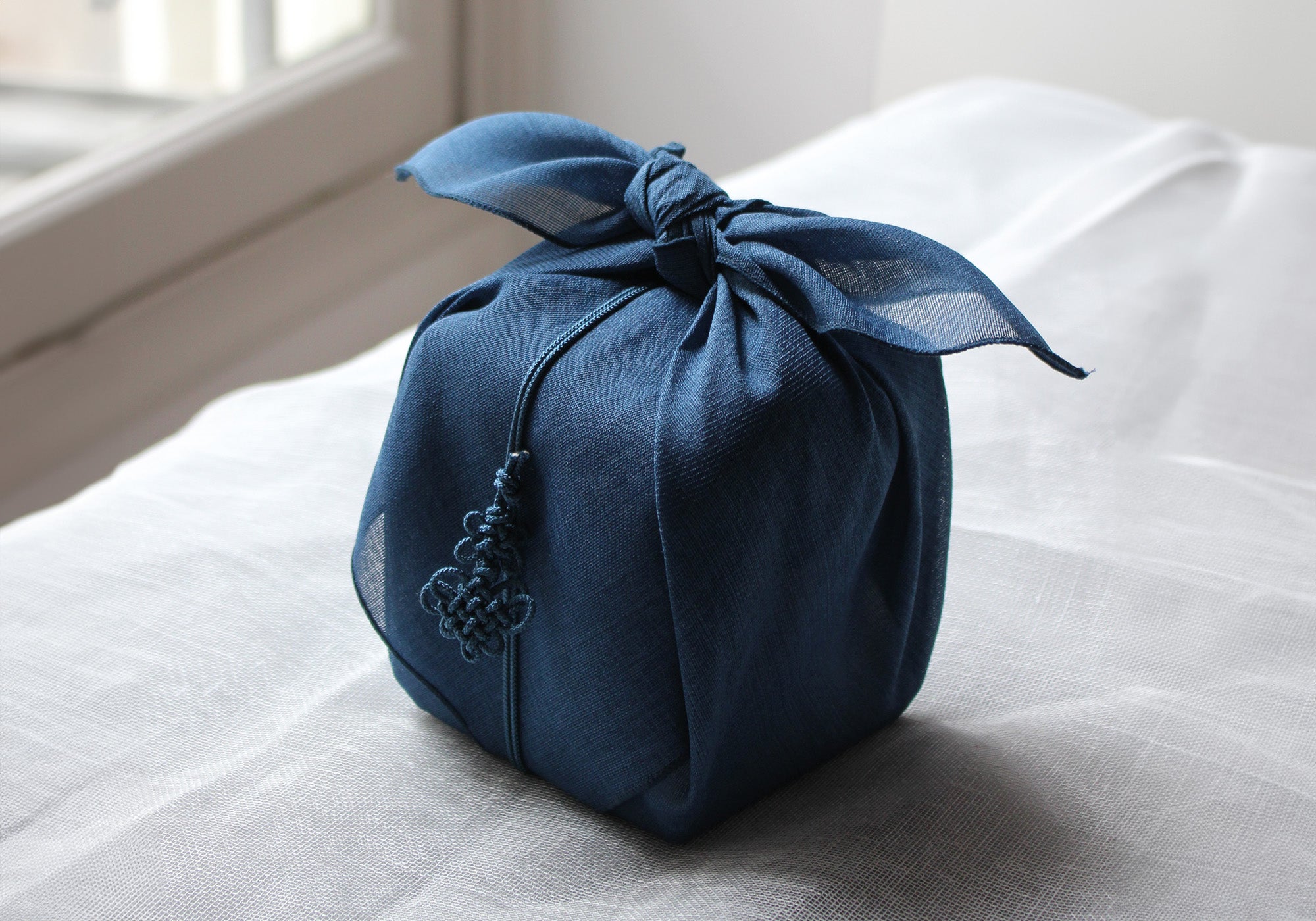
The art of wrapping
The exceptional items are wrapped in a beautiful fabric beautifully knotted according to the little-known art of Korean pojagi and decorated with a delightful maedup (Korean ornamental knot). Details and conditions >


